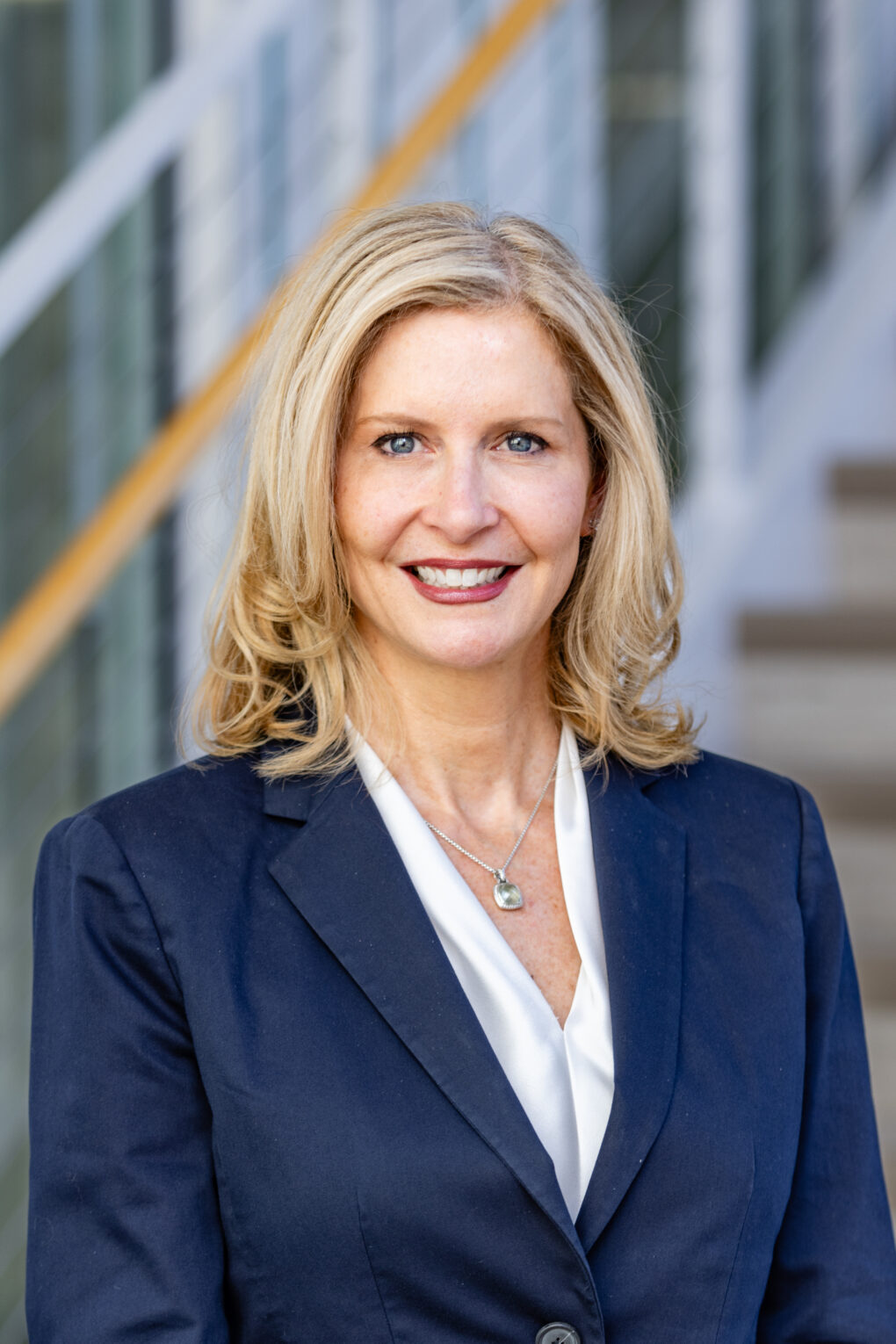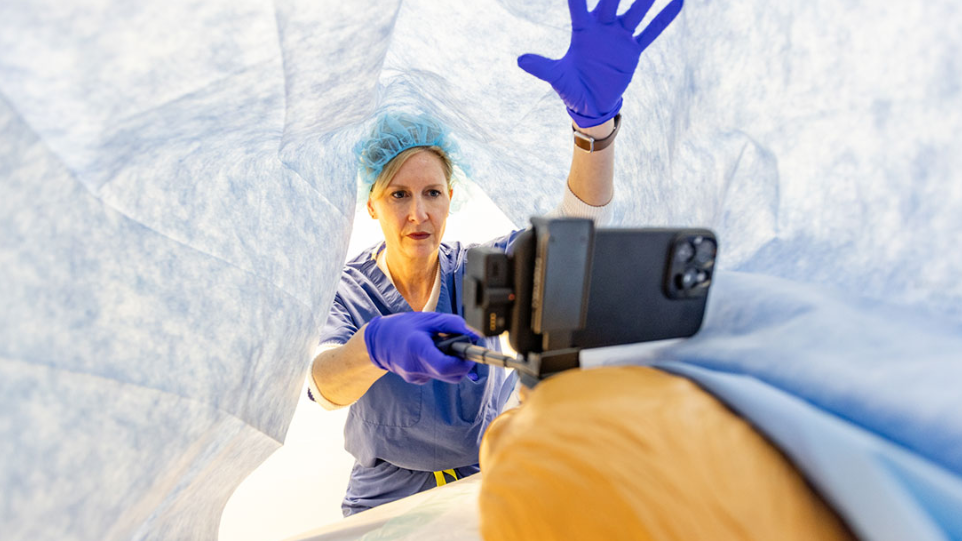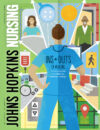Even if virtual reality goggles had been around when she was growing up in Pittsburgh PA, Kristen Brown, DNP, CRNP, CPNP-AC, CHSE-A, FAAN, likely would not have seen this coming. “Nobody sits around in high school dreaming about becoming a simulation educator,” says the associate dean for simulation and immersive learning at the Johns Hopkins School of Nursing.
Brown kind of fell into it herself during a nearly two-decade a career as a critical care nurse and then a nurse practitioner at Johns Hopkins Hospital’s pediatric intensive care unit. “My love for academia and teaching—it’s very similar to what it was at the bedside,” she explains. “How do I make an impact? I would go into work and take care of a critically ill child and you could see the impact on both the patient and the family. What I also started to love was my role as an educator, precepting new nurse practitioners. I loved that light bulb going on, and I loved those connections being made.”
The first in her family to go to college (undergrad at the University of Pittsburgh, master’s at the University of Maryland, DNP at Johns Hopkins), Brown is today a Certified Healthcare Simulation Educator-Advanced (CHSE-A) a certification by the Society for Simulation in Healthcare (SSH) for those who have proven themselves as advanced educators and leaders in simulation-based education. In January, she will be inducted as a fellow of the SSH Academy, which recognizes those “who have made outstanding and sustained contributions for the field of health care simulation.”
Brown has seen the opportunities an education can bring and is determined that no student under her watch will miss them. That attitude is built into the decision-making on new tech for her Center for Simulation & Immersive Learning. “Everybody is going to want to sell you on the next big thing,” Brown says.
One thing Brown is sold on is the XR Learning Hub, a pilot education platform she’s fine-tuning at JHSON that combines her clinical experience and passion for immersive learning with cutting-edge tech to fix common issues with clinical training for students. Her aim is to make clinical experiences more flexible, available, and—the big key—controllable. “You can’t predict what situations a learner will encounter while on a clinical rotation, but with simulation, you can make sure they are exposed to what they need and must see.”
The XR Hub is a virtual space that allows the learner to engage with faculty and then travel through portals to environments, such as the hospital bedside, and experience care through the eyes of a provider, of course, but also a patient.
How it works is that mixed reality (MR) blends the physical and digital worlds to create an immersive and interactive experience. Volumetric capture (VC) records and re-creates 3D photorealistic models of people, objects, and environments. Blending the technologies creates deeper immersion and more lifelike environments, thus greater retention and increased proficiency for medical procedures and exposure to clinical encounters.
Artificial intelligence? Great tool, used correctly and with a human touch. “Of course, AI is the biggest game changer we have. But its impact is in the way we leverage it, using it to assess how well students are learning and then modifying how we are educating them based on that information,” she explains. “Everybody learns differently. The one-size-fits-all should no longer be a thing. The goal isn’t to say. ‘You fail.’ The goal is, ‘We’re not going to let you fail.’ ”

And don’t buy a hammer to put in a screw. “With the technology changing so fast, you have to understand best practice and matching modality. When I’m working with a faculty member who wants to train on communication, the best modality may be an actor or standardized patient vs. a mannequin. But if you are in the CRNA [certified registered nurse anesthetist] program and need to train on managing someone who’s under anesthesia, who has a breathing tube in, and you’re dealing with vital signs or critical management, then the modality is not an actor, it’s a mannequin. So, depending upon the learning objective, you align the modality,” Brown says.
Then, “If you maintain the same principles, whether you’re using a mannequin, virtual reality, augmented reality, mixed reality, or whatever modality is going to be coming, if you hold true to doing the things that deliver good education, it doesn’t matter what the technology is.”
The first nurse to be named a Zamierowski Simulation Fellow, Brown spent two years at the JHU Medicine Simulation Center. Brown credits the philanthropist behind that fellowship, David Zamierowski, MD, with putting her in a position to jump at an opportunity like the associate dean role offered by JHSON. “He has made a big impact on my life,” she says of a supporter who has helped advance simulation programs at the University of Kansas as well as Johns Hopkins, where he attended medical school.
“The goal isn’t to say. ‘You fail.’ The goal is, ‘We’re not going to let you fail.’ ”
She understands that simulation is expensive in terms of time, space, and human capital but hopes that by leveraging technology, she can offer training more often with fewer resources. A regular simulation booster shot can help cement the learning. It might even keep a struggling nurse on the job, Brown insists.
“Everybody’s working on this pipeline of getting more nurses into the workforce. But what about keeping them there? Transition-to-practice from nursing school to the bedside is very difficult. We lose a ton of nurses in that period.” To prevent such burnout, Brown prescribes “making sure that people maintain an education, that they’re an active participant in the education, that they’re moving the needle, and they feel like they’re engaged. And you can do that with simulation, across the continuum.”
As a recipient of a 2024 JHU Nexus Award, Brown (with School of Medicine colleague Geoffrey Miller, PhD, MS) will convene experts from simulation, education, and professional organizations in the spring to develop and lead a vision for “Shaping the Future of the Healthcare Workforce: Policy and Best Practice Recommendations for the Use of Simulation for Healthcare Education.” The NEXUS Awards program supports a diverse range of programming, research, and teaching at the university’s new Hopkins Bloomberg Center at 555 Pennsylvania Avenue in Washington DC.
“The nursing workforce shortage is a public health crisis,” Brown says, “and we have to work together to come up with real solutions.” ◼


